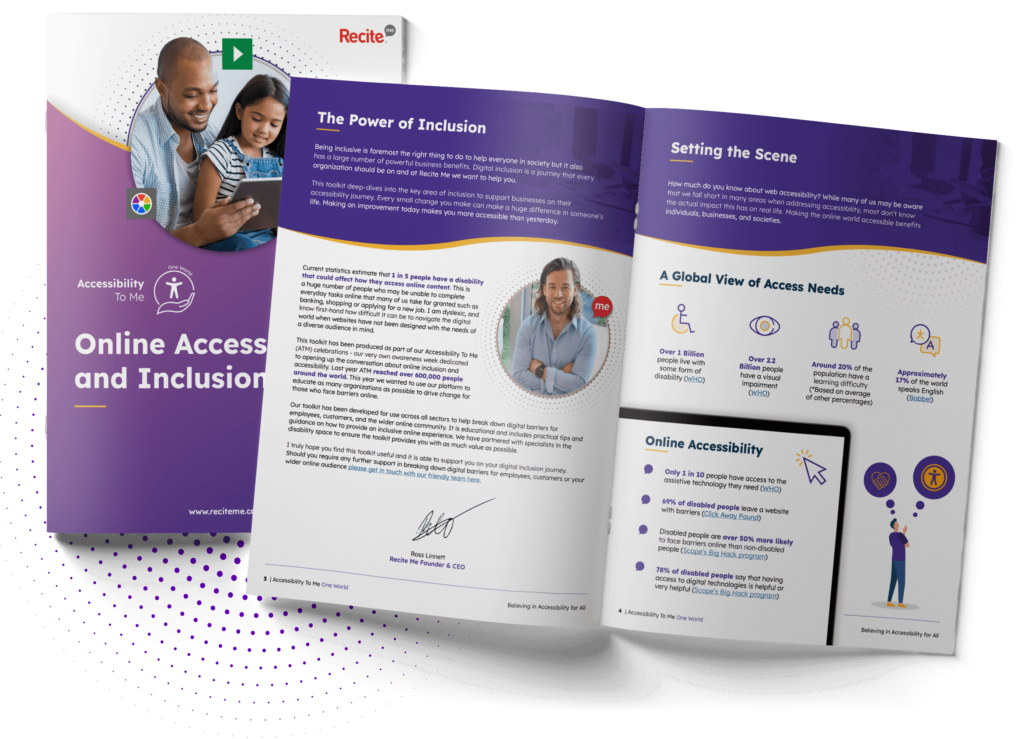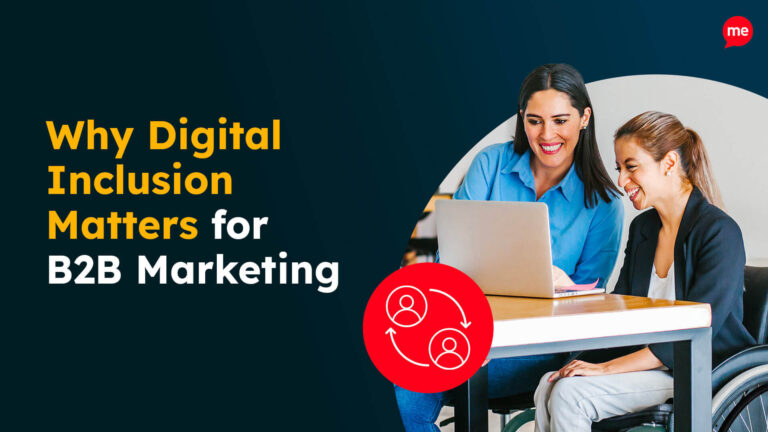Get Your Free Accessibility & Inclusion Toolkit
Download NowThe topic of neurodiversity has been growing exponentially in recent years. For good reason. More people than ever before are aware of neurological differences, and are taking steps to get diagnosed, to educate others, or to be more informed themselves. This has led to a much deeper understanding and a collective desire to embrace our differences and the language we use while doing that is a key consideration.
Why is it Important that we Use the Right Language?
In the last couple of decades, the language used to describe disability has become more positive and less discriminatory. However, there is still a persistent trend towards describing people by their disability or belittling them because of it. Using inclusive language acknowledges diversity and conveys respect. It is sensitive to differences and promotes equitable opportunities.
Many organisations shy away from having conversations about disability and disability language because they can be awkward, and it’s normal for people to be wary of offending their friends and colleagues. However, it’s good practice to familiarise yourself with the correct terms and have open and respectful conversations about disability-related issues to increase inclusion. Whether it be in the workplace, in the classroom, or in the home, intentionally choosing our words is an impactful step we can take towards creating an inclusive world.

Key Terms to Know: Neurodiverse, Neurodivergent, and Neurotypical
There are several variations of key terms to be aware of, and misusing any of them is easy if you’re not familiar with the basics. Let’s take a look at the most common descriptors, their meaning, and some examples of correct and incorrect usage.
Neurodiverse
Neurodiversity refers to collective variations in the human brain and cognition in the way we deal with sociability, learning, attention, and other mental functions. It is a biological state of being, not an approach, belief, or political position. It is as unchangeable as the colour of our skin or the size of our feet.
Individuals are often mistakenly described as ‘Neurodiverse.’ However, this is not the correct term because neurodiversity is not a trait any individual possesses. In the same way you wouldn’t describe one particular person as ‘diverse,’ you shouldn’t describe someone as neurodiverse. It is a group trait, not an individual one.
Examples
Correct – At Recite Me, we are a neurodiverse team
Incorrect – His neurodiversity means he processes information in a different way
Neurodivergent
The correct descriptor for an individual is ‘Neurodivergent,’ which simply means a person whose neurology (mind) differs from dominant societal norms.
Neurodivergent is a broad term, accounting for cognitive differences that are either innate or acquired. For example, autism and dyslexia are innate forms of neurodivergence, whereas differences caused by illness or head injury trauma can occur at any time in a person’s life. It’s also possible for an individual to be multiply divergent if they have several neurodivergent traits.
Examples
Recite Me aims to be an inclusive employer, and we promise to make the necessary accommodations for employees who are autistic, dyslexic, or otherwise neurodivergent.
Everyone in the head injury rehabilitation class is neurodivergent.
Neurotypical
Neurotypical is the opposite of neurodivergent. A neurotypical brain is one that does not display characteristics of developmental differences or atypical patterns of thought or behavior. What neurotypical doesn’t doesn’t mean is ‘normal’ or ‘not autistic.’ This is a common misconception, and one of the primary factors that makes becoming more inclusive of neurological differences challenging.
Being neurotypical means merely that they share a style of cognitive functioning with the dominant societal group.
Examples
I’m neurotypical, but am very comfortable with other people’s neurodivergence.
Are you autistic or neurotypical?
Inclusive Best Practices
Knowing the lingo is one thing, but putting it into practice is quite another. Don’t worry, though! The main thing is you’re open to having conversations about neurodiversity and embracing individual differences. And that’s a great start! If in doubt, the best course of action is to:
- Ask how an individual would like to be described to avoid stereotyping or negative connotations.
- Never describe a person who is neurodivergent as ‘inspirational’ or ‘brave.’ These words are patronising and insinuate that they are somehow different in a negative way.
- Ensure you put the person before their disability – i.e., use the term ‘persons with a disability’ rather than ‘disabled people’.
- Don’t mention a person’s disability at all if it isn’t relevant. Instead, focus on the requirements of individuals and reflect on how you can provide support.
You can learn more about the neurodiversity barriers and how to help reduce them here.
Download our Inclusion Toolkit to Learn More About Inclusive Language and Communications
The Recite Me Digital Inclusion Toolkit has been developed to help businesses make a real difference to people’s lives. Download your copy today to learn more about:
- Disability do’s and don’ts.
- Website design tips for an inclusive website.
- How to write an accessibility statement for your website.
- Inclusive recruitment and workplaces best practices.
- How to provide inclusive company communications.




